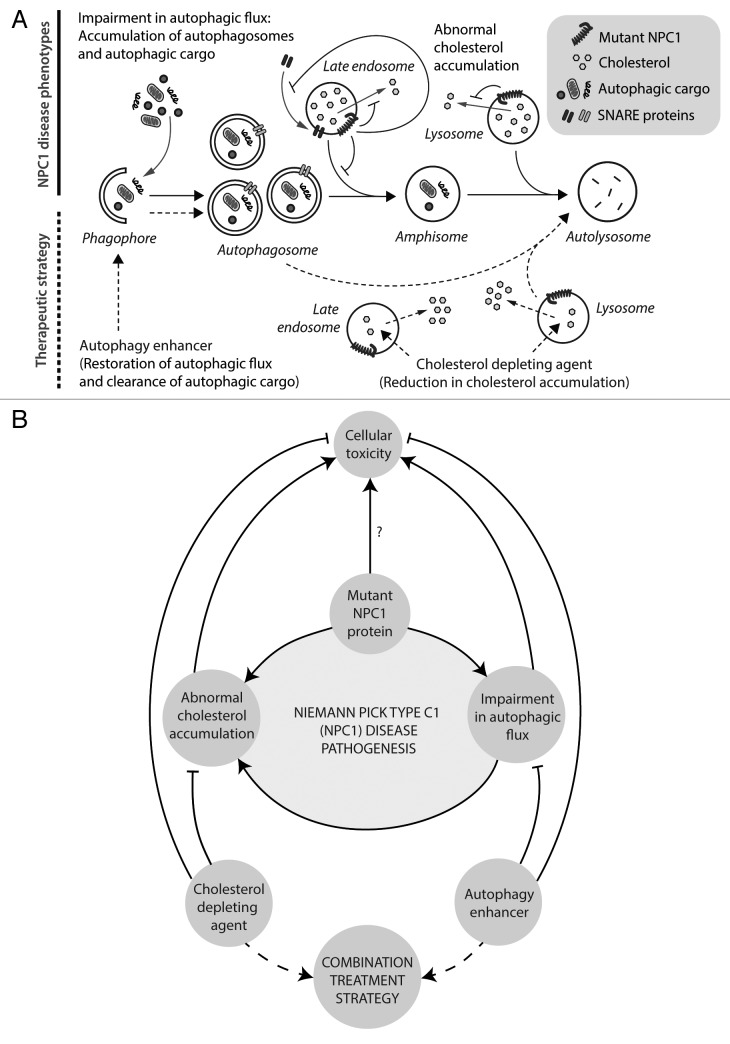Figure 1. Disease mechanisms and treatment strategy for NPC1 disease. (A) Mutations in LE/L-resident NPC1 protein inhibits cholesterol efflux, leading to cholesterol accumulation. Mutant NPC1 protein also impedes autophagosome maturation, thereby causing impairment in autophagic flux associated with accumulation of autophagosomes and autophagic cargo. This is attributable to defective amphisome formation resulting from failure in the SNARE machinery due to a reduced propensity of the late endosomes for recruiting SNARE proteins. Therapeutic avenues are shown (with dashed lines) for depleting cholesterol and enhancing autophagy to rescue both of the defects. Stimulating autophagy restores its function by facilitating autophagosome maturation independent of amphisome formation, thereby mediating the clearance of autophagic cargo. (B) Mutant NPC1 protein imparts cellular toxicity through abnormal cholesterol accumulation and impairment in autophagic flux. Defective autophagy also increases intracellular cholesterol load, thereby creating a deleterious feedback in augmenting the disease pathogenesis. Combination treatment strategy can be achieved with a cholesterol-depleting agent and an autophagy enhancer to rescue both the disease phenotypes.

An official website of the United States government
Here's how you know
Official websites use .gov
A
.gov website belongs to an official
government organization in the United States.
Secure .gov websites use HTTPS
A lock (
) or https:// means you've safely
connected to the .gov website. Share sensitive
information only on official, secure websites.
